The most common Honda Pioneer 700 problems are transmission problems, starting issues, increased fuel consumption, differential lock problems, cold engine issues, PTO problems, steering issues, electrical problems, exhaust problems, ignition switch problems, and heating issues.
Here we discuss these problems in detail with their easy solutions.
12 Honda Pioneer 700 problems and Solutions
Now we are going to discuss the Honda Pioneer 700 issues and these are the same as the Honda Pioneer 520 issues.
1. Transmission Problems
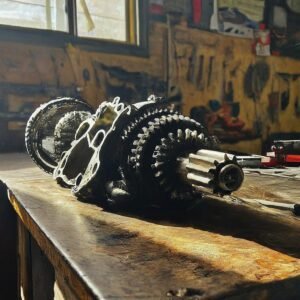
Here are a few transmission issues of the Honda Pioneer 700. Continue your journey by reading the top speed of the Honda Pioneer 700.
1. Shifting Difficulties
One of the most common transmission problems reported by Honda Pioneer 700 owners is difficulty shifting gears. This issue can manifest in various ways, such as gears grinding, sticking, or slipping. If you are experiencing shifting difficulties, there are a few potential causes to consider:
- Low or contaminated transmission fluid: Insufficient or contaminated transmission fluid can affect the smooth operation of the gears. Check the fluid level and quality, and if necessary, replace it according to the manufacturer’s recommendations.
- Worn or damaged clutch components: The clutch system plays a crucial role in shifting gears. If the clutch plates or springs are worn or damaged, they may need to be replaced to restore proper shifting.
- Maladjusted shift linkage: A misaligned or improperly adjusted shift linkage can cause shifting problems. Consult your vehicle’s manual for instructions on how to adjust the shift linkage correctly.
Addressing these potential causes can often resolve shifting difficulties. However, if the problem persists, it is recommended to seek assistance from a qualified mechanic or authorized Honda dealer.
2. Transmission Slipping
Another transmission problem that some Honda Pioneer 700 owners have encountered is slipping. Transmission slipping refers to a situation where the vehicle’s engine revs up, but the wheels do not respond accordingly. Here are a few possible reasons for transmission slipping:
- Worn clutch plates: Over time, the clutch plates can wear out, leading to slipping. If the clutch plates are worn beyond their service limit, they should be replaced.
- Low transmission fluid: Insufficient fluid can prevent the transmission from engaging properly, resulting in slipping. Make sure the fluid level is correct and top it up if necessary.
- Internal damage: In some cases, internal damage to the transmission may be causing the slipping. This could be due to worn gears, bearings, or other components. If internal damage is suspected, professional diagnosis and repair are recommended.
If you are experiencing transmission slipping, it is important to address the issue promptly to avoid further damage to the transmission system. Seeking professional help is often the best course of action in such cases.
3. Overheating
Overheating is another transmission problem that can affect the Honda Pioneer 700. Excessive heat can cause the transmission fluid to break down, leading to poor performance and potential damage to the transmission. Here are a few factors that can contribute to transmission overheating:
- Excessive towing or heavy loads: The transmission can overheat when subjected to heavy towing or carrying heavy loads for extended periods. Avoid exceeding the vehicle’s recommended towing and payload capacities.
- Insufficient cooling: If the transmission cooler is not functioning correctly or is obstructed, it can impede proper cooling of the transmission fluid. Regularly inspect and clean the cooler to ensure optimal performance.
- Operating in extreme conditions: High ambient temperatures or prolonged operation in challenging terrain can put additional strain on the transmission, leading to overheating. Allow the vehicle to cool down periodically and consider using additional cooling measures if necessary.
If you notice signs of transmission overheating, such as a burning smell or fluid discoloration, it is crucial to address the issue promptly. Check for any obstructions or damage to the cooler and ensure that you are operating within the vehicle’s recommended limits.
Some other Transmission Issues
- Transmission Fluid Leaks: Transmission fluid leaks are a common cause of transmission problems in any vehicle, including the Honda Pioneer 700. Leaks can occur due to worn seals, damaged transmission lines, or loose bolts. It’s crucial to identify and repair any leaks promptly to prevent fluid loss and potential transmission damage.
- Delayed Engagement: If you experience a delay or hesitation when shifting gears, it could indicate a problem with the transmission valve body or shift solenoids. These components control the flow of transmission fluid and the engagement of gears, and any malfunction can result in delayed gear engagement.
- Strange Noises: Unusual noises such as whining, grinding, or clunking coming from the transmission can indicate various issues, including worn bearings, damaged gears, or a failing torque converter. It’s essential to have the transmission inspected by a qualified mechanic to identify and address the source of the noise.
- Check Engine Light: If the check engine light illuminates on your dashboard, it could indicate a transmission-related problem. Modern vehicles, including the Honda Pioneer 700, are equipped with onboard diagnostics systems that can detect faults within the transmission and other engine components. It’s crucial to have the vehicle scanned for trouble codes to determine the cause of the issue.
2. Honda Pioneer 700 Starting Problems

Here are some issues due to which your UTV won’t start. Also explore the best offroad vehicles.
1. Battery Issues
One of the most common causes of starting problems in Honda Pioneer 700 is a faulty or discharged battery. If you turn the key and nothing happens, or if you hear a clicking sound, it’s likely that your battery is the problem.
Solution:
Make sure the battery connections are clean and tight. If you find any corrosion or loose connections, clean them with a battery cleaner and tighten them securely. If the battery is discharged, try jump-starting the vehicle using jumper cables and a working battery. It may be time to replace the battery if the problem persists.
2. Fuel Issues
Another common starting problem in the Honda Pioneer 700 is related to fuel. If your vehicle is not getting enough fuel or if the fuel is contaminated, it can prevent the engine from starting.
Solution:
Check the fuel level in your vehicle and make sure it is sufficient. If the fuel level is low, fill up the tank with fresh fuel. If you suspect that the fuel may be contaminated, drain the fuel tank and replace it with clean fuel. Additionally, check the fuel filter for any clogs or debris. If necessary, replace the fuel filter.
3. Ignition System Issues
The ignition system plays a crucial role in starting your Honda Pioneer 700. If there are issues with the ignition switch, starter motor, or spark plugs, it can result in starting problems.
Solution:
Check the ignition switch to ensure it is functioning properly. Consider replacing it if you notice any signs of wear or damage. Inspect the starter motor for any signs of malfunction, such as grinding noises or excessive heat. If necessary, have the starter motor repaired or replaced. Additionally, check the spark plugs for any signs of wear or fouling. Clean or replace the spark plugs as needed.=
4. Electrical System Issues
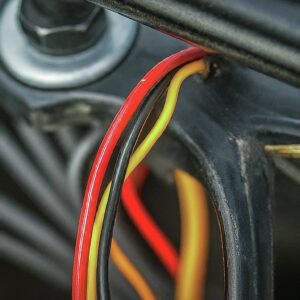
One of the most frequently reported issues with the Honda Pioneer 700 electrical system is a dead or weak battery. This can be caused by several factors, including leaving the lights on, a faulty charging system, or simply an old battery. Another common problem is blown fuses, which can affect various components like lights and ignition.
Diagnosing Electrical Issues
When diagnosing electrical problems, the first step is to check the battery. Use a multimeter to measure the voltage; a fully charged battery should read around 12.6 volts.
If the voltage is low, try charging the battery and testing again. If it doesn’t hold a charge, it might be time for a replacement.
If the battery is fine, the next step is to inspect the fuses. The fuse box is usually located under the hood. Check for any blown fuses and replace them if necessary. Remember, using the correct fuse rating is crucial to avoid further issues.
3. Power Loss Problems

One of the most frequent causes of power loss in the Honda Pioneer 700 is a clogged air filter. A dirty or clogged air filter restricts airflow to the engine, reducing its ability to perform efficiently. Regular maintenance and cleaning of the air filter can help prevent this issue.
Another potential cause is a faulty fuel pump. The fuel pump is crucial in delivering fuel to the engine. If it’s not working correctly, the engine may not receive enough fuel, leading to power loss. Replacing a malfunctioning fuel pump can resolve this problem.
Diagnosing and Fixing the Problem
To diagnose power loss, start by inspecting the air filter. If it’s dirty, clean it or replace it if necessary. Next, check the fuel pump to ensure it’s operating correctly. If you suspect it’s faulty, replace it with a new one.
Additionally, inspect the spark plugs. Worn or fouled spark plugs can cause misfires, leading to power loss. Replacing spark plugs at regular intervals can help maintain engine performance. You can also explore the issues of the Honda Pioneer 500.
4. Increased fuel consumption
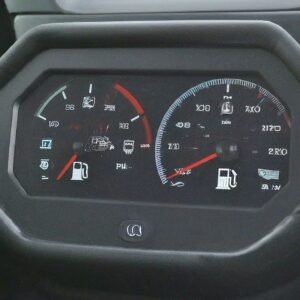
Here are a few Honda Pioneer 700 issues due to it begins to increase fuel consumption. Also explore the offroading.
- Dirty Air Filter: A clogged or dirty air filter can restrict airflow to the engine, causing it to work harder and use more fuel. Regular maintenance and cleaning of the air filter can help mitigate this problem.
- Poor Fuel Quality: Using low-quality fuel can affect engine performance and lead to higher fuel consumption. Ensure you are using the recommended fuel type for your Honda Pioneer 700.
- Tire Pressure: Incorrect tire pressure can increase rolling resistance, making the engine work harder. Always check and maintain the recommended tire pressure levels.
Solutions to Improve Fuel Efficiency
- Regular Maintenance: Keeping up with regular maintenance schedules, such as oil changes and air filter replacements, can significantly improve fuel efficiency.
- Proper Driving Techniques: Avoid aggressive driving behaviors like rapid acceleration and hard braking, which can increase fuel consumption. Smooth and steady driving is more fuel-efficient.
- Engine Tune-Up: Periodic engine tune-ups ensure that your engine is running optimally, reducing fuel consumption. This includes checking spark plugs, fuel injectors, and other engine components.
5. Honda Pioneer 700 Differential lock Issues
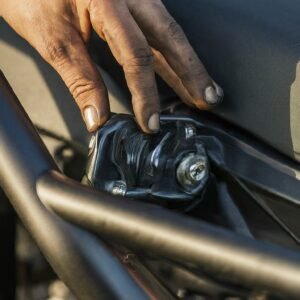
Here are some issues of Differential lock that you face with your Honda Pioneer. Also explore Honda Pioneer 700 vs 1000 .
1. Differential Lock Not Engaging
If you are experiencing difficulties in engaging the differential lock on your Honda Pioneer 700, there are a few potential causes to consider:
Solution:
- Check the differential lock cable for any signs of damage or wear. If you notice any issues, replace the cable.
- Inspect the differential lock mechanism for any obstructions or debris that may be preventing it from engaging. Clean or remove any obstacles that you find.
- Ensure that the differential lock switch is functioning properly. If necessary, replace the switch.
2. Differential Lock Engaging but Not Disengaging
If your differential lock is engaging but not disengaging, it can be frustrating and may cause unnecessary strain on your vehicle. Here are some potential solutions to this problem:
Solution:
- Check the differential lock cable for any signs of damage or wear. Replace the cable if necessary.
- Inspect the differential lock mechanism for any obstructions or debris that may be preventing it from disengaging. Clean or remove any obstacles that you find.
- Ensure that the differential lock switch is functioning properly. If needed, replace the switch.
- Verify that the differential lock actuator is working correctly. If it is faulty, consider replacing it.
3. Differential Lock Making Strange Noises
If you notice unusual noises coming from your Honda Pioneer 700’s differential lock, it may indicate an underlying problem. Here are some possible solutions:
Solution:
- Inspect the differential lock for any signs of damage or excessive wear. If you notice any issues, have a professional technician examine and repair it.
- Check the differential fluid level and quality. Low or contaminated fluid can cause noise and may require a fluid change.
- Ensure that all the components of the differential lock system are properly lubricated. Apply lubricant as needed.
6. Cold Engine Issues
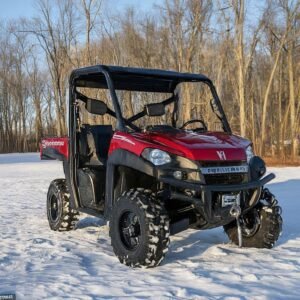
Here are a few issues due to which the engine of your Pioneer 700 is cold.
1. Difficulty Starting
One of the most common Honda Pioneer 700 problems with a cold engine is difficulty starting. When the temperature drops, the engine may struggle to turn over, resulting in a frustrating experience for the rider. If you find yourself in this situation, here are a few solutions to try:
- Check the Battery: A weak battery can make it difficult for the engine to start. Ensure that the battery is fully charged and in good condition.
- Use the Choke: The choke helps to enrich the fuel mixture, making it easier for the engine to start. Make sure to engage the choke before attempting to start the engine in cold weather.
- Warm Up the Engine: Letting the engine warm up for a few minutes before attempting to start it can help improve starting performance.
2. Rough Idling
Another issue that may arise with a cold engine is rough idling. This can be characterized by a shaky or unstable engine when it is running at idle speed. To address this problem, consider the following solutions:
- Adjust the Idle Speed: If the engine is idling too low or too high, it may result in a rough idle. Consult your owner’s manual for instructions on how to adjust the idle speed.
- Clean the Carburetor: A dirty or clogged carburetor can cause rough idling. Remove the carburetor and clean it thoroughly to ensure proper fuel flow.
- Check the Fuel System: Inspect the fuel lines and fuel filter for any blockages or damage that may be affecting the engine’s performance.
3. Poor Acceleration
In cold weather, you may notice that your Honda Pioneer 700 has poor acceleration. This can be frustrating, especially when you need that extra power to navigate challenging terrain. Here are a few solutions to improve acceleration:
- Warm Up the Engine: Allowing the engine to warm up for a few minutes before pushing it to its limits can help improve acceleration.
- Replace the Spark Plugs: Worn or fouled spark plugs can affect the engine’s performance. Replace them regularly to ensure optimal combustion.
- Check the Air Filter: A dirty air filter can restrict airflow to the engine, resulting in poor acceleration. Clean or replace the air filter as needed.
7. PTO Problems
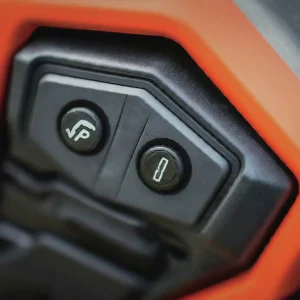
One of the most frequent issues with the Honda Pioneer 700’s PTO system is engagement failure. This can happen due to worn-out clutch plates or transmission issues.
Another common problem is overheating, which can be caused by insufficient lubrication or a clogged cooling system.
Electrical issues, such as faulty wiring or malfunctioning switches, can also disrupt the PTO operation. Recognizing these problems early can prevent further damage and costly repairs.
Solutions
To address engagement issues, first inspect the clutch plates for wear and tear. If they are damaged, replacing them should resolve the problem.
For overheating issues, check the lubrication levels and ensure that the cooling system is free from obstructions.
If you encounter electrical issues, inspect the wiring and switches for any signs of damage or corrosion. Replacing faulty components can restore the proper function of the PTO system.
Regular maintenance, including timely lubrication and system checks, can also help prevent these problems from occurring.
8. Steering Problems

One of the most frequent problems is stiff steering, which can make it difficult to maneuver your vehicle.
This can be caused by low power steering fluid, worn-out steering components, or improper wheel alignment.
Another common issue is the steering wheel shaking or vibrating, which could be a sign of unbalanced tires or damaged suspension parts.
Effective Solutions
Addressing these steering problems can significantly improve your vehicle’s performance. For stiff steering, start by checking the power steering fluid level and topping it up if necessary.
Regularly inspect and replace worn-out steering components such as the steering rack and tie rods. Proper wheel alignment is crucial; if you notice any misalignment, have it corrected by a professional.
For steering wheel vibrations, ensure your tires are balanced and inspect the suspension for any damage. Replacing faulty parts can resolve the issue and provide a smoother driving experience.
9. Electric Problems
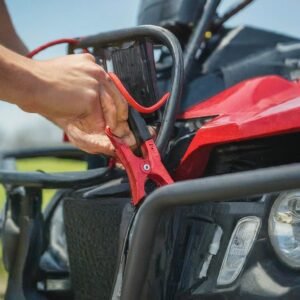
One of the most frequent issues is the battery not holding a charge. This can be due to a faulty battery, loose connections, or a malfunctioning charging system.
Another common problem is intermittent electrical failures, often caused by corrupted or damaged wiring.
Finally, some users report issues with the vehicle’s ignition system, which can prevent the engine from starting.
Solutions
To solve battery-related issues, check the battery terminals for corrosion and ensure all connections are secure. If the problem persists, it may be necessary to replace the battery. For wiring issues, inspect all electrical connections for signs of wear or damage.
Replacing damaged wires or connectors can often resolve intermittent electrical failures. If you face ignition problems, check the ignition switch and starter relay for faults. Replacing these components can restore proper function.
10. Exhaust Problems
Exhaust leaks are often caused by damaged gaskets or cracks in the exhaust manifold. Regular wear and tear can lead to these issues, mainly if you frequently use your Honda Pioneer 700 on rough terrains.
Unusual noises, such as hissing or rattling, might indicate a loose or damaged exhaust component. Additionally, a drop in engine performance can result from a clogged catalytic converter or a malfunctioning oxygen sensor.
Solutions
To address exhaust leaks, inspect the gaskets and replace any worn or damaged ones. If you find cracks in the exhaust manifold, replace the entire part. For unusual noises, check for loose components and tighten or replace them as needed.
To enhance engine performance, ensure the catalytic converter is blockage-free and the oxygen sensor functions correctly. Regular maintenance can prevent many of these problems and keep your Honda Pioneer 700 running smoothly.
11. Ignition Switch Problems
One of the most frequent issues with the Honda Pioneer 700 ignition switch is difficulty turning the key. A worn-out or damaged ignition switch can cause this.
Another common problem is a non-responsive ignition switch, where turning the key does not start the engine. This could be due to electrical issues or a faulty ignition switch.
Diagnosing the Issue
First, check the condition of the ignition switch. Look for signs of wear and tear or physical damage. Next, inspect the electrical connections. Ensure that all wires are securely connected and there are no signs of corrosion.
Using a multimeter, test the voltage to verify if the ignition switch is receiving power. If the ignition switch appears in good condition and the electrical connections are intact, the issue may lie elsewhere, such as with the starter motor or battery.
Solutions
If the ignition switch is worn out or damaged, replacing it is often the best solution. OEM replacement parts are recommended for the best compatibility and performance. For electrical issues, cleaning the connectors and ensuring a tight fit can resolve the problem.
In some cases, you may need to replace corroded or damaged wires. Regular maintenance and inspection can also prevent ignition switch problems from occurring in the first place.
12. Honda Pioneer 700 Overheating Issues
Overheating in the Honda Pioneer 700 can result from several factors. The primary cause is often an issue within the cooling system.
This might include a malfunctioning radiator fan, clogged fins, or low coolant levels. Working the machine too hard in hot weather can also contribute to overheating.
Another potential cause is a dirty air filter, which can restrict airflow and make the engine run hotter than usual. In some cases, older models might have design flaws that worsen heat problems.
Practical Solutions and Preventive Measures
Addressing the heat problems in your Honda Pioneer 700 involves a few strategic steps. Firstly, ensure that the radiator is clean and free from debris.
Compressed air can blow out any dirt or leaves clogging the fins. Secondly, regularly check the coolant level and top it off if necessary. Using a high-quality coolant can also make a significant difference.
Inspect the radiator fan to ensure it is functioning correctly. If it’s not, it might need to be replaced. Additionally, consider upgrading to a high-performance fan for better cooling efficiency.
Replacing the air filter regularly is another simple yet effective measure to prevent overheating.
Conclusion:
These are the few Honda Pioneer 700 problems with their easy solutions. Now whenever you encounter any of these issues you can solve them easily by following the above guidelines.

